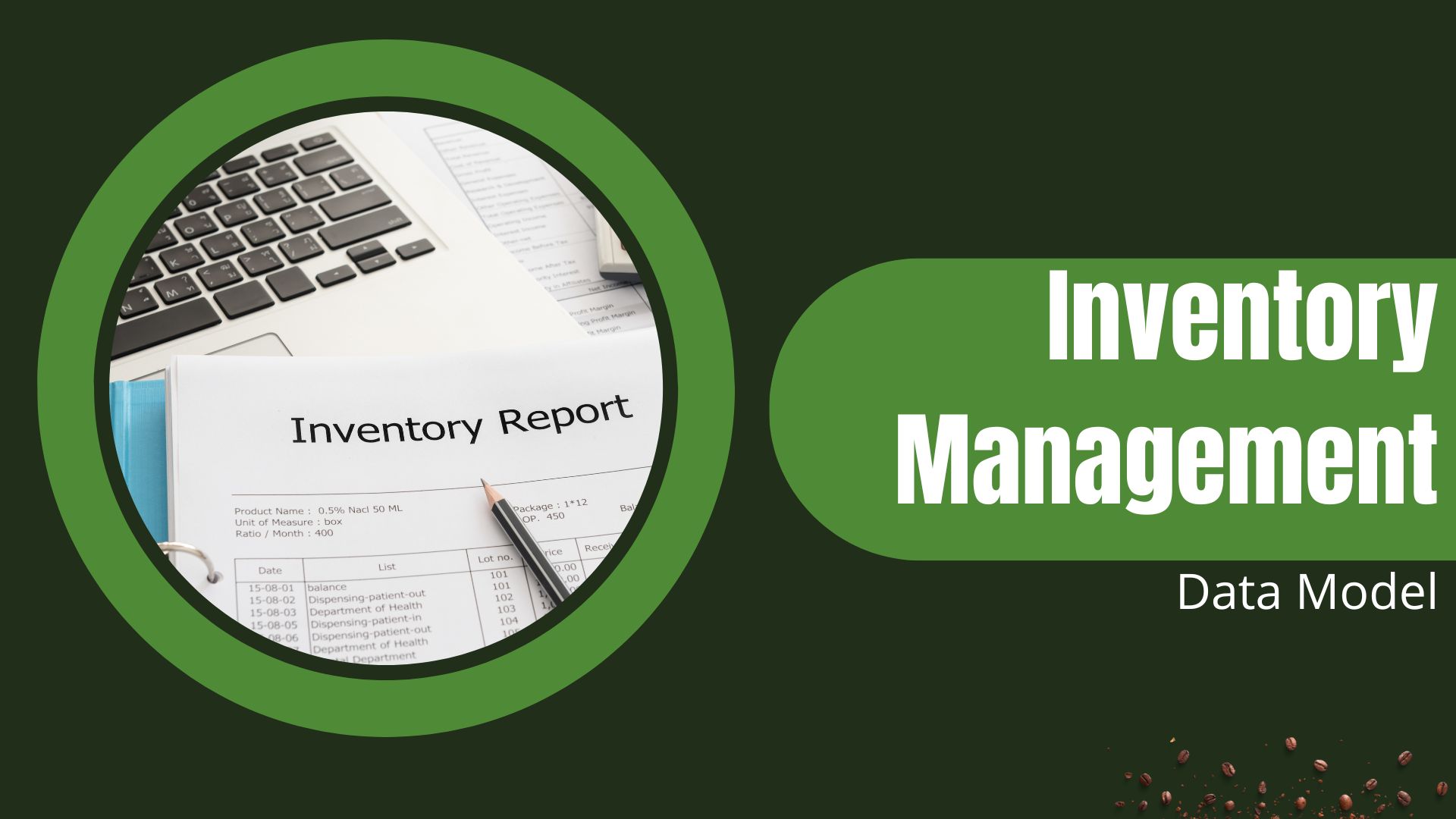An inventory management data model is a structured representation of how inventory-related information is organized, stored, and accessed by a business. It helps businesses efficiently manage and track their inventory levels, orders, and stock movements.
This model enables businesses to optimize their inventory control processes, improve customer satisfaction, and increase operational efficiency. Additionally, it allows businesses to make data-driven decisions regarding inventory planning, forecasting, and demand management. With an effective inventory management data model in place, businesses can avoid stockouts, reduce carrying costs, minimize excess inventory, and streamline their supply chain operations.
We will explore the key components and benefits of an inventory management data model to help businesses enhance their inventory management practices and drive business growth.
The Importance Of Inventory Management Data Model
The Importance of Inventory Management Data Model
Effective inventory management is crucial for businesses of all sizes. A strong data model for inventory management plays a significant role in achieving operational excellence and driving business growth. By implementing an efficient data model, companies can improve productivity, minimize costs, and maximize profits.
An optimized inventory management data model allows businesses to streamline their operations. Through effective tracking and analysis of inventory levels, companies can easily manage their stock, reduce wastage, and eliminate out-of-stock situations. This enables businesses to meet customer demands promptly, resulting in enhanced customer satisfaction.
Furthermore, an inventory management data model helps in identifying trends and forecasting future demand. By having accurate data on hand, businesses can make informed inventory decisions and improve supply chain management. With proper analysis and forecasting, businesses can avoid excessive inventory, prevent stockouts, and ensure an efficient order fulfillment process.
Overall, having a robust inventory management data model is essential for organizations to optimize their inventory levels, reduce costs, and maximize profits. By implementing an efficient data model, businesses can ensure smooth operations and deliver exceptional customer experiences.
Streamlining Inventory Management Processes
Streamlining inventory management processes is essential for businesses looking to optimize their operations and improve efficiency. By centralizing and automating inventory management systems, organizations can ensure that all relevant data is easily accessible and synchronized across locations.
Implementing real-time tracking and reporting capabilities allows businesses to have up-to-date and accurate information about their inventory levels, helping them make informed decisions and prevent stockouts or overstocking situations. This enables companies to reduce carrying costs while ensuring that they meet customer demand.
Furthermore, enhancing inventory forecasting and demand planning helps businesses optimize their inventory levels even further. By analyzing historical data and market trends, organizations can accurately predict future demand and plan their procurement and production activities accordingly. This minimizes the risk of excess or insufficient inventory, leading to improved customer satisfaction and increased profitability.
Optimizing Inventory Levels For Maximum Efficiency
Optimizing inventory levels is essential for businesses looking to maximize efficiency. To achieve this, it is crucial to analyze historical sales data and market trends. By understanding past performance, companies can accurately forecast demand and adjust their inventory levels accordingly. Setting optimal reorder points and safety stock levels is another key aspect of inventory management. It ensures that the right amount of stock is available at the right time, reducing the risk of stockouts or overstocking. Additionally, leveraging a just-in-time (JIT) inventory management approach can help minimize carrying costs and improve cash flow. JIT allows businesses to receive inventory only when it is needed, reducing the need for excessive storage space and associated costs.
Improving Supply Chain Collaboration And Visibility
Improving Supply Chain Collaboration and Visibility
Enhancing communication between suppliers and stakeholders is essential for effective supply chain management. By establishing clear channels of communication, businesses can ensure that all parties involved in the supply chain are kept informed about inventory levels, demand fluctuations, and any potential disruptions. This can be achieved through regular meetings, email updates, and the use of collaborative software platforms.
In addition to communication, implementing data sharing and integration across the supply chain can greatly enhance collaboration and visibility. By integrating data from suppliers, manufacturers, distributors, and retailers, businesses can gain real-time insights into inventory levels, order statuses, and demand patterns. This allows for better coordination of production, distribution, and replenishment activities, ultimately improving efficiency and reducing costs.
Furthermore, enhancing transparency and visibility of inventory movement is crucial for effective inventory management. Businesses can use technologies such as barcoding, RFID, and GPS tracking to accurately track the location and status of inventory throughout the supply chain. This enables businesses to proactively identify bottlenecks, optimize inventory levels, and respond quickly to changing customer demands.
Leveraging Predictive Analytics For Demand Forecasting
Leveraging Predictive Analytics for Demand Forecasting:
Analyze customer behavior and historical sales data: In order to accurately forecast demand, businesses need to analyze customer behavior and historical sales data. This involves identifying patterns, trends, and variables that can impact customer purchasing decisions. By understanding customer preferences, businesses can make data-driven decisions on inventory management.
Utilize machine learning algorithms for accurate demand forecasting: Machine learning algorithms can play a crucial role in demand forecasting. These algorithms can analyze vast amounts of data, including customer behavior and historical sales, to predict future demand. By processing and interpreting large datasets, machine learning algorithms can provide more accurate demand forecasts compared to traditional methods.
Optimize inventory allocation based on demand prediction: With accurate demand forecasts, businesses can optimize their inventory allocation. By understanding which products are likely to have a higher demand, businesses can strategically allocate their inventory to meet customer needs. This can help prevent stockouts and excess inventory, leading to improved customer satisfaction and cost savings.
Enhancing Inventory Tracking And Accuracy Through Barcoding
Enhancing Inventory Tracking and Accuracy through Barcoding
Barcoding technology is revolutionizing inventory management, providing businesses with a more accurate and streamlined approach to tracking their stock. By implementing barcode scanning technology, companies can ensure accurate inventory counting, minimizing human error and optimizing efficiency. Barcodes allow for quick and reliable product identification, simplifying the process of updating and tracking inventory levels. With barcode scanning, businesses can eliminate manual data entry and the risks associated with it, resulting in improved accuracy. Moreover, the automation provided by barcoding enhances inventory tracking across the entire supply chain. From the moment a product is received to the point it is sold, barcode scanning provides real-time visibility, enabling businesses to make informed decisions and prevent stockouts or overstocking. By embracing barcode scanning technology, businesses can transform their inventory management processes, improving accuracy, reducing costs, and enhancing overall operational efficiency. |
Integrating Warehouse Management With Inventory Systems
Integrating warehouse management with inventory systems is essential for optimizing warehouse layout and organization to ensure efficient inventory management.
Automation of workflows and material handling processes is a crucial step in achieving seamless integration. By automating these processes, businesses can reduce manual errors, improve productivity, and save time. Automated systems can handle tasks such as order picking, replenishment, and cycle counting, facilitating real-time updates to inventory data.
A key component of integrating warehouse management with inventory systems is syncing the warehouse management system with inventory management data. This synchronization enables accurate tracking of stock levels, locations, and movements. It also aligns inventory data across multiple channels and provides real-time visibility into stock availability.
By integrating warehouse management with inventory systems, businesses can streamline operations, improve inventory accuracy, optimize space utilization, and enhance overall efficiency in managing inventory.
Utilizing Cloud-based Solutions For Scalability And Flexibility
Utilizing cloud-based solutions for inventory management offers several benefits, including scalability and flexibility. One of the key advantages is real-time data access which provides accurate and up-to-date information about inventory levels. This enables businesses to make informed decisions and effectively manage their inventory to meet customer demands. Furthermore, cloud-based solutions allow for remote inventory management, making it convenient for businesses with multiple locations or remote teams. As the business grows, scalability becomes crucial. Cloud-based solutions offer the flexibility to scale inventory management operations seamlessly, ensuring that the system can handle increasing volumes of data and transactions without any disruptions. Additionally, these solutions prioritize data security, ensuring that sensitive inventory information remains protected. Furthermore, cloud-based inventory management systems can be easily integrated with other business systems, enabling seamless data flow between various departments and facilitating efficient processes.
Using Inventory Management Data Model For Decision Making
A well-designed inventory management data model can provide valuable insights for decision-making. By utilizing such a model, businesses can make informed inventory decisions based on data-driven insights.
One key benefit of utilizing an inventory management data model is the ability to optimize inventory turnover and reduce carrying costs. By analyzing historical data, businesses can identify slow-moving items and adjust their inventory levels accordingly. This helps to prevent overstocking, reduce wastage, and improve overall efficiency.
Another advantage of using an inventory management data model is the ability to identify trends and patterns. By analyzing sales data, businesses can detect seasonal fluctuations in demand, identify popular items, and anticipate future inventory needs. This allows for proactive inventory management, ensuring that the right products are available at the right time.
In conclusion, an inventory management data model can provide businesses with the insights needed to make informed decisions regarding inventory. By optimizing inventory turnover, reducing carrying costs, and identifying trends, businesses can improve efficiency and profitability.
Frequently Asked Questions Of Inventory Management Data Model
What Is An Inventory Management Data Model?
An inventory management data model is a framework that organizes and structures data related to inventory management processes and activities. It defines the relationships between different data elements, such as products, suppliers, customers, orders, and stock levels, to facilitate efficient inventory tracking and control.
What Are The Benefits Of Using An Inventory Management Data Model?
Using an inventory management data model offers several benefits, including improved accuracy in tracking inventory levels, streamlined order fulfillment processes, enhanced forecasting capabilities, reduced inventory carrying costs, and better decision-making through access to real-time and reliable inventory data.
How Does An Inventory Management Data Model Help In Preventing Stock-outs?
An inventory management data model helps in preventing stock-outs by providing visibility into stock levels and enabling accurate demand forecasting. By tracking inventory in real-time, the model helps identify low stock levels, triggering reordering or replenishment processes to ensure sufficient stock is available to meet customer demands, thereby avoiding stock-outs.
What Are The Key Components Of An Inventory Management Data Model?
An inventory management data model typically includes key components such as product information, supplier details, customer data, order tracking, stock levels, purchase history, demand forecasting, and inventory performance metrics. These components work together to provide a comprehensive view of inventory-related activities and facilitate effective management.
Conclusion
Implementing an efficient inventory management data model can greatly contribute to the success of any business. By accurately tracking and organizing inventory, businesses can optimize their operations, minimize costs, and improve customer satisfaction. With the right systems in place, businesses can streamline their supply chain, enhance decision-making processes, and achieve a competitive advantage in the market.
Invest in a robust inventory management data model and watch your business thrive.

Ron D. Palermo is a distinguished figure in the financial landscape, specializing as a strategic investment expert. With a comprehensive background in finance and a keen analytical mindset, Ron D. Palermo has carved a niche as a trusted advisor in the dynamic field of strategic investments. Her career is marked by a strategic approach to investment decisions, where she combines in-depth market analysis with a forward-thinking perspective. Ron D. Palermo excels in identifying opportunities that align with overarching financial goals, whether in traditional markets or emerging sectors.
Known for her ability to navigate complexities and anticipate market trends, Ron D. Palermo provides invaluable insights to individuals and organizations seeking to optimize their investment portfolios. Her strategic investment expertise extends beyond short-term gains, focusing on creating robust, long-term financial strategies that align with clients’ unique objectives. As a thought leader in strategic investments, Ron D. Palermo continues to shape the conversation around effective investment planning and risk management, making her a go-to expert for those looking to navigate the intricacies of the financial landscape.


